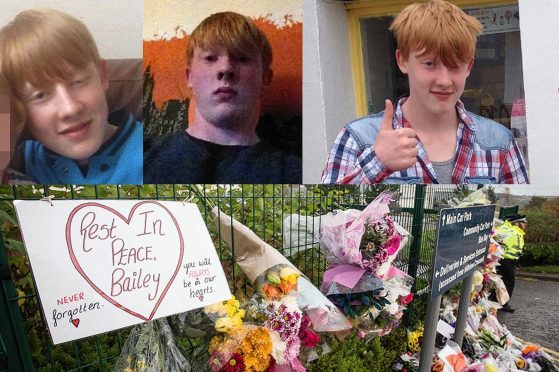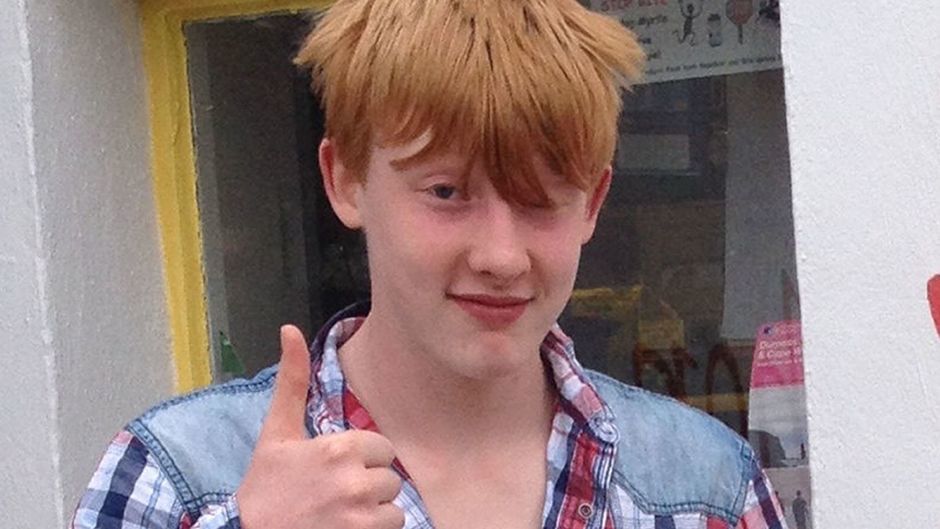A murder trial jury has been told that a schoolboy stabbed in the heart may not have survived even if he had been attacked right outside an operating theatre.
Professor James Grieve said at the High Court in Aberdeen that the moments after Bailey Gwynne suffered the injury would have been “crucial” to his survival chances.
And the retired pathologist added that because of the distance between Cults Academy and Aberdeen Royal Infirmary he was “not surprised” the teenager died.
Prof Grieve was giving evidence on the fourth day of the trial of a 16-year-old accused of murdering Bailey at the city secondary.
The youth, who cannot be named for legal reasons, admits he struck the fatal blow during a fight with his fellow pupil but denies murder.
Prof Grieve, who carried out the post-mortem on Bailey, who was also 16, said the blade of the knife used by the accused had gone between the youngster’s ribs and penetrated the left ventricle of his heart.
But he added he was “relatively confident” that the knife did not penetrate his body up to the hilt.
When asked by defence counsel Ian Duguid QC whether he could estimate the degree of force used to make the wound, the pathologist said: “If you stab quickly with a pointed instrument, that is the best way.”
The lawyer also asked about the potential impact on the force of the blow had Bailey been moving towards the knife while it was in the accused’s hands.
The pathologist said it would “absolutely” have been a factor, had that been the case.
Prof Grieve said that if the whole blade of the knife purchased by the accused on Amazon for £40 had entered Bailey’s body he would have expected it to have pierced the back wall of the heart – which it had not.
When asked by advocate depute Alex Prentice QC, who is prosecuting the case, whether the injury would have been survivable the professor said he was “not surprised the teen died”.
He said: “Survival is about treatment and accessibility of treatment from my point of view. As a pathologist what I see with injuries like this is always the end point.
“I’m not a clinician or a cardiothoracic surgeon or an A&E specialist. If you say everyone I have seen with a wound like this is dead it’s not helpful because I only see people who die with their wounds.
“I could not say that if this happened outside an operating theatre, with surgeons all there scrubbed up and ready, it would be necessarily fatal.
“But the further away you get from that circumstance it is less likely there’s any chance of survival. And let’s face it, that situation would never occur.”
The professor said the wound sustained, which led to “catastrophic blood loss” was an “exceptionally dangerous” one.
He added: “The nature of the heart means the problems that occur with a wound to the heart are blood loss and shock, this is an exceptionally dangerous wound and one I would have thought time would have been critical.
“Cults Academy, where my own children went to school, is not very far out of the city but it’s far enough away.
“Having seen the reports of paramedics and emergency workers, I’m not surprised by what the outcome was in spite of everything.
“I would have expected that this was going to be fatal injuries given what I knew at the time. I have seen many injuries like this all with the same outcome.”
The jury of eight women and seven men were asked to examine two photographs of Bailey’s body taken during the post-mortem. One was of Bailey’s torso and another a close-up of the wound.
The court previously heard that following the fatal blow Bailey stumbled down the length of a corridor at the school known as “the street” before collapsing against a wall gasping for breath.
A trail of blood could be seen where the tragic teen had walked.
Prof Grieve was asked if it was possible for someone who had suffered such an injury to make that journey.
He said the blow would quickly “destroy the integrity of that system” and cause the heart to beat faster in response to the blood loss.
He said: “The resulting shock and trauma is very variable. It depends on how fit the individual is.
“The capacity around injury to the heart is not about the heart, it is about the brain.
“The brain is going to function for a little while using up the resources it has.
“It is remarkable how young people can seem to be not affected because they have greater capacity.
“But they will collapse very suddenly.”
The trial, before Lady Stacey, continues.
Bailey Gwynne trial: All evidence has been heard
All the evidence has now been led in the trial of a Cults Academy schoolboy accused of murdering fellow pupil Bailey Gwynne.
On Monday judge Lady Stacey is expected to send the jury of seven men and eight women out to consider their verdict after a week-long trial at the High Court in Aberdeen.
Bailey died on October 28 after suffering “catastrophic blood loss” from an injury he sustained when the 16-year-old accused’s knife penetrated his heart during a lunchtime brawl.
The teenager, who can not be named for legal reasons, admits killing Bailey in a “moment of anger” – but denies murder.
Yesterday the court heard from the Crown’s final witness Professor James Grieve, who carried out the post-mortem on the schoolboy.
The prosecution then closed its case.
Counsel for the accused, Ian Duguid QC, said his client had “elected not to give evidence on his own behalf” and said no other witnesses would be called for the defence.
During the trial the court heard Bailey collapsed in a school corridor after walking 100 yards just after being stabbed through the heart following a row over a biscuit.
Witnesses said they watched as the tragic teen and the accused came to blows outside a toilet block after a remark was made about Bailey’s mother being “fat”.
The accused later told police he only meant to “scare” Bailey away when he pulled a knife from his blazer pocket and waved it at him.
The boy said that he had ducked down to protect himself as Bailey came towards him, with the knife held out in front of him.
He claimed he was unaware he had stabbed his fellow pupil until a teacher split them up and he noticed blood on Bailey’s shirt.
The court was shown a video recording of the interview the teenager gave to the police and when he was told he was being charged with murder he broke down and said: “I did try and save him.”
The jury previously heard evidence that the accused had been seen with a knife several times in school and that he had brought knuckledusters on to the premises “40 or 50 times”.
In his police interview the accused, who is also charged with being in possession of knives and knuckledusters while at the school, said he carried weapons with him “every day”.
He said he did it to “look cool” and to “look tough”.
He denies these charges.
A verdict is expected early next week.

